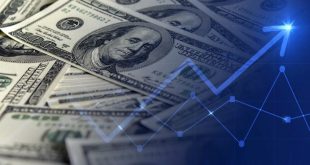During the third quarter, the Japanese yen faced continued losses against the U.S. dollar, driven by the differing monetary approaches of the Bank of Japan and the Federal Reserve. The Federal Reserve, aiming to restore price stability, aggressively raised borrowing costs, leading to the highest benchmark rate since 2002 and elevated U.S. Treasury yields across various maturities.
In contrast, the Bank of Japan, under the leadership of Kazuo Ueda, maintained an ultra-dovish stance to avoid disrupting efforts to eliminate Japan’s deflationary mindset. While there were minor adjustments to the yield curve in August, there was no indication that the bank was ready to abandon negative interest rates, even with headline CPI surpassing the 2.0% target for over a year.
Amidst these circumstances, USD/JPY experienced a robust rally, surpassing the psychological 148.00 level and reaching its highest point in nearly a year by late September. This surge signaled the prevailing control of the market by the bulls.
Heading into the fourth quarter, market dynamics are expected to remain relatively stable. Consequently, the yen might continue to depreciate initially, albeit with some moderation. Speculators might exercise caution due to intermittent discussions of FX intervention by the Japanese government, potentially averting excessive weakening.
Upon closer look, two significant factors may bolster the U.S. currency at the expense of the yen in the short term. Firstly, the guidance from the Federal Reserve indicates the possibility of another quarter-point hike later this year. Secondly, U.S. policymakers remain steadfast in their commitment to keeping interest rates higher for an extended period.
However, as the fourth quarter progresses, the situation might shift in favor of the yen. This change is anticipated as the Bank of Japan prepares to transition from its exceptionally accommodative policy. Governor Ueda has suggested that there might be enough consumer price data available by the year-end to consider potential adjustments to borrowing costs.
The current discussions in policymaking circles suggest a growing tendency to move away from negative interest rates by the Bank of Japan (BOJ). This shift comes in response to the considerable devaluation of the yen and escalating inflation. It appears that this message is part of a proactive approach aimed at giving investors ample time and early communication to absorb these changes. The objective is to prevent disruptions in the market and cushion against unexpected shocks as the policy shift gradually unfolds.
Given the forward-looking nature of financial markets, investors might take proactive measures in anticipation of the BOJ’s normalization cycle, expected to begin in the spring of 2024. Traders, seeking to anticipate this shift, might exert pressure on USD/JPY towards the end of the year. Consequently, it is conceivable that the fourth quarter will commence with yen weakness, followed by a period of strength relative to the U.S. dollar.
 Noor Trends News, Technical Analysis, Educational Tools and Recommendations
Noor Trends News, Technical Analysis, Educational Tools and Recommendations





